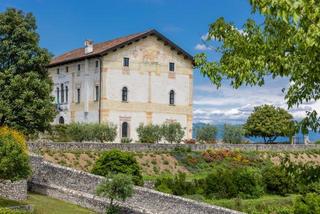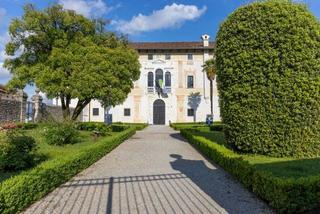
In the Borgo Valbruna reside the di Sopra
The powerful comital palace of the Spilimbergo di Sopra stands in Borgo Valbruna, once an area of many artisan shops. Walking through alleys and gardens, you reach a marvelous building: the Palazzo di Sopra, the current municipal seat. The first documents attesting to its existence date back to the early 1300s, when Fulcherio was assigned the circle of Valbruna, following a patrimonial division, with the task of building a castrum and a moat. In May 1499, an agreement allowed Paolo (son of Odorico di Spilimbergo) and his nephews to expand and improve the existing building.
The fact is that the Palazzo was completely renovated: from a medieval building, a sixteenth-century villa was created, inspired by the models dictated by Venetian taste.
The villa then featured large rooms with very high ceilings, bright windows opened on the walls, and sanitary facilities were arranged inside.
The ownership of the villa and the surrounding area remained with the counts until 1920, the year in which the property was acquired by the Ciriani family.
For more information: ViviSpilimbergo - Photo Denis Scarpante
The Accademia Parteniana
The fame of the palace is also linked to the sixteenth-century academy directed by the humanist Bernardino Partenio. An elite school for the offspring of good Friulian families, founded in 1538 with the support of Count Adriano di Spilimbergo. In the spacious rooms of the villa, students could dedicate themselves to their daily studies, in the adjoining oratory of San Rocco they could participate in liturgical celebrations, and within the garden, they had the opportunity to play among themselves and engage in physical activities (also included in the school program).
Among the subjects were Greek and Latin. Stancaro taught there, who, among other things, was responsible for giving Hebrew lessons, to better read and interpret the Sacred Texts. However, these teachings were interpreted as heretical and thus were frowned upon.
The life of the Accademia was very short and did not survive long after the count's death: it was closed in 1541.
For more information: ViviSpilimbergo


